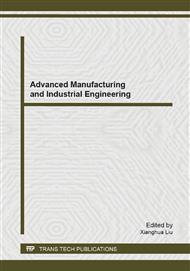p.1143
p.1147
p.1151
p.1156
p.1161
p.1165
p.1170
p.1174
p.1178
Educational Affordance of eTextbook in Primary Schools: A Case Study
Abstract:
ETextbook has changed the practice of classroom teaching and learning and made the virtual classroom and reality classroom together. This study aims to explore educational affordances on eTextbooks within iPads. To address this research goal, this case study reports findings from a four-week pilot study of using eTextbooks with 6 teachers and 144 students in one primary school in Beijing. The results show that five educational affordances of eTextbooks, including individuality learning materials, annotations and note-taking, multi-dimensional representation of knowledge, multi-touch and various interaction, and control the progress of multi-media materials presentation. These educational affordances of eTextbook have implications for current and future developments in the pattern of teaching and learning in classroom.
Info:
Periodical:
Pages:
1161-1164
Citation:
Online since:
August 2014
Authors:
Keywords:
Price:
Сopyright:
© 2014 Trans Tech Publications Ltd. All Rights Reserved
Share:
Citation:


